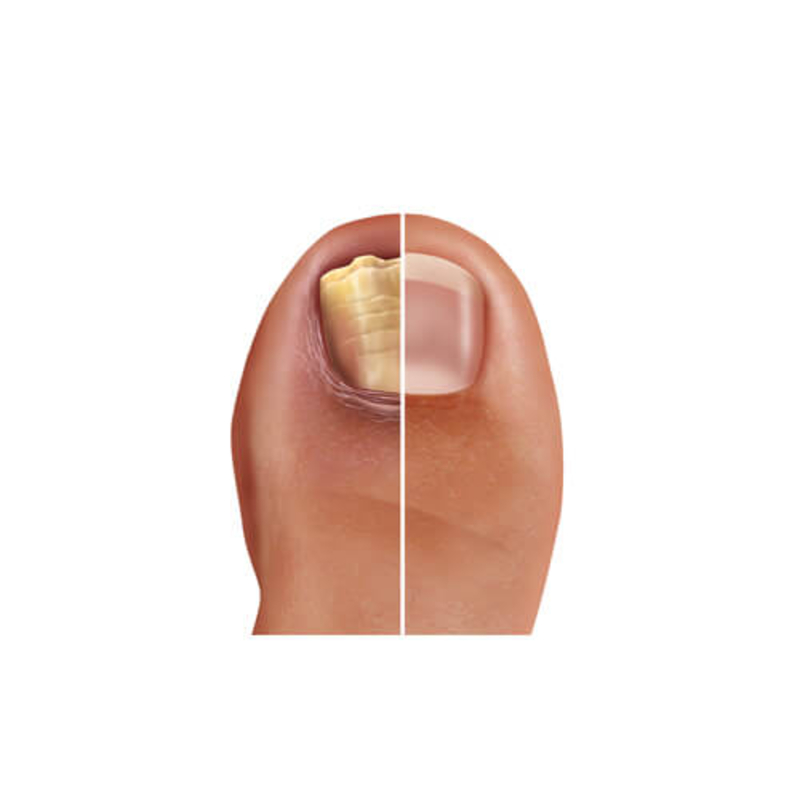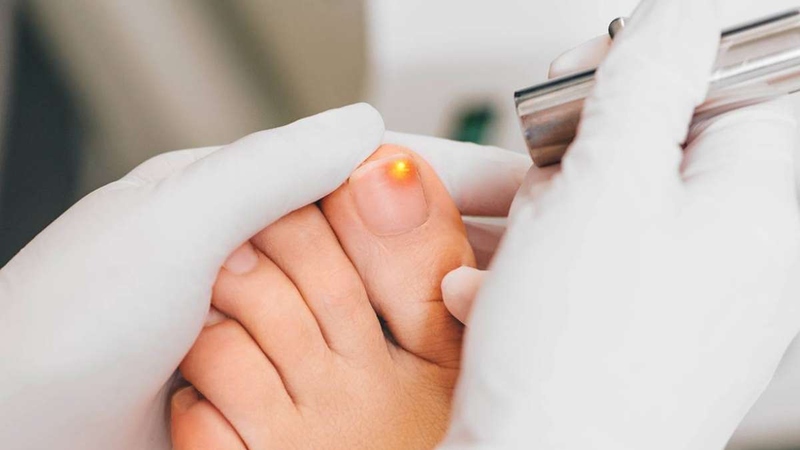A Comprehensive Guide To Understand Toenail Fungus
Feb 26, 2024 By Nancy Miller
Onychomycosis, the medical term for toenail fungus, is a prevalent fungal infection that affects the toenails. It typically initiates with a minute white or yellow spot beneath the nail and then progresses to cause discoloration, thickening, and even complete crumbling. This article delves into the nuances of this condition. It illuminates its impact, provides an understanding of natural treatments available, and outlines symptoms and causes, ultimately culminating in preventive measures one can take against such infections.
1. Natural Treatment for Toenail Fungus
A multifaceted approach is essential in the natural combat against toenail fungus. Antifungal agents, such as tea tree oil and oregano oil, boasting inherent antifungal properties present promising results. Extracted from the Melaleuca alternifolia tree, tea tree oil displays noteworthy effectiveness. It inhibits fungal growth with demonstrable success. Carvacrol, a compound renowned for its antifungal and antimicrobial effects, is also present in oregano oil. When directly applied to affected nails, these natural remedies penetrate the nail bed. They effectively target the fungus at its source.
Holistic foot care practices significantly contribute to natural treatment. Regularly soaking feet in warm water and apple cider vinegar mixture, apart from creating an unfavorable environment for fungal growth, restores the acidic balance of the skin. This combination not only aids in preventing infection spread but also promotes overall toenail health. To achieve positive outcomes, one must prioritize consistency in applying these natural treatments. This necessitates patience as the nail, over time, gradually renews its healthy appearance.
- Moisture control: Ensure feet are thoroughly dried after any treatment, as fungal infections thrive in damp environments.
- Consultation with a healthcare professional: Persistent or severe cases may require professional evaluation and guidance.
2. Symptoms of Toenail Fungus

Early identification of toenail fungus is crucial for swift intervention. Changes in nail color, thickness, and texture commonly present as symptoms. However, the infection's progression can manifest in more pronounced ways. Advanced fungal growth often presents a clear indicator. This is a distinct foul odor that emanates from the affected nail. The infection may cause pain, particularly when pressure is applied to the affected toe. Severe cases can lead to onycholysis and detachment of the nail from its bed. This underscores why immediate treatment is crucial.
Individuals who understand the subtleties of these symptoms can differentiate toenail fungus from other nail disorders. Recognizing it early enables them to take prompt action, preventing a worsening infection and potential complications. By observing these signs with vigilance, in conjunction with regular foot inspections, they gain empowerment for taking proactive measures against toenail fungus.
- Avoid self-diagnosis: Consulting a healthcare professional ensures accurate identification and appropriate treatment.
- Early intervention: Prompt treatment reduces the risk of complications such as secondary bacterial infections.
3. Causes of Toenail Fungus
Dermatophytes, molds, and yeasts are the primary culprits. These contribute to toenail fungus development due to several factors. Warm and damp environments beyond these microbial agents create ideal breeding grounds for fungi. Notoriously fostering fungal growth are sweaty shoes, particularly if worn for extended periods, and public swimming pools. Toenail fungus risk escalates in individuals with compromised immune systems, poor circulation, and pre-existing nail conditions such as trauma or deformities.
Individuals gain empowerment by comprehending the multifaceted nature of these causes, leading them to adopt preventive measures. A comprehensive strategy for minimizing the risk of toenail fungus involves addressing both external factors, such as footwear choices, and internal ones like overall health.
- Hereditary factors: A family history of toenail fungus may increase susceptibility, warranting extra preventive measures.
- Regular foot inspections: Routine checks enhance early detection and intervention.
4. Strategies to Prevent Toenail Fungus
Implementing practical strategies in daily life actively prevents toenail fungus. This involves a foundational focus on proper foot hygiene, regular cleaning, thorough drying, and meticulous nail trimming. Further to that strategy is the choice of breathable footwear, particularly in warm environments. It reduces moisture retention and creates an unfavorable condition for fungal growth. Frequently changing socks and abstaining from barefoot walking in public places are practices that further reduce the risk of fungal exposure.
Adding an extra layer of protection, the use of antifungal powder complements these practices. It absorbs excess moisture, creating an environment hostile to fungal development. Opting for moisture-wicking socks is a strategy that contributes to our proactive defense against toenail fungus.
- Fungal resistance: Consistent preventive measures also reduce the risk of developing resistance to antifungal treatments.
- Proper shoe ventilation: Well-ventilated shoes minimize the moisture content, hindering fungal proliferation.
5. Seeking Medical Attention for Toenail Fungus

Natural treatments may effectively manage toenail fungus, yet certain instances necessitate the imperative need for professional medical attention. When persistent or severe cases exhibit minimal improvement with home remedies, it is then that the expertise of a healthcare professional becomes indispensable. In this context, dermatologists specialize in the diagnosis and treatment of fungal infections. They offer customized solutions aligned to the specific nature of each infection, a testament to their proficiency within this field.
Prescribers may administer oral antifungal medications in certain instances, particularly with a widespread or resistant fungal infection that defies topical treatments. These medicines actively combat the fungal infection internally by targeting it systemically within the body. Diligently adhering to the prescribed course is crucial for achieving complete eradication of the fungus. There can be no compromise on this step.
- Accurate diagnosis: Dermatologists can conduct tests to confirm the presence of toenail fungus and identify the specific type of fungus.
- Tailored treatment plans: Healthcare professionals can recommend personalized treatment approaches based on the severity and characteristics of the infection.
Conclusion
To conclude, one must acknowledge the prevalence of toenail fungus as a condition and the availability of numerous natural treatment options. It is imperative to identify its symptoms and comprehend its underlying causes. Furthermore, adopting preventive strategies. This trifecta plays an indispensable role in sustaining optimal foot health. Incorporating these insights into daily routines enables individuals not only to navigate but also to combat effectively against toenail fungus, a practice that promotes overall well-being.







